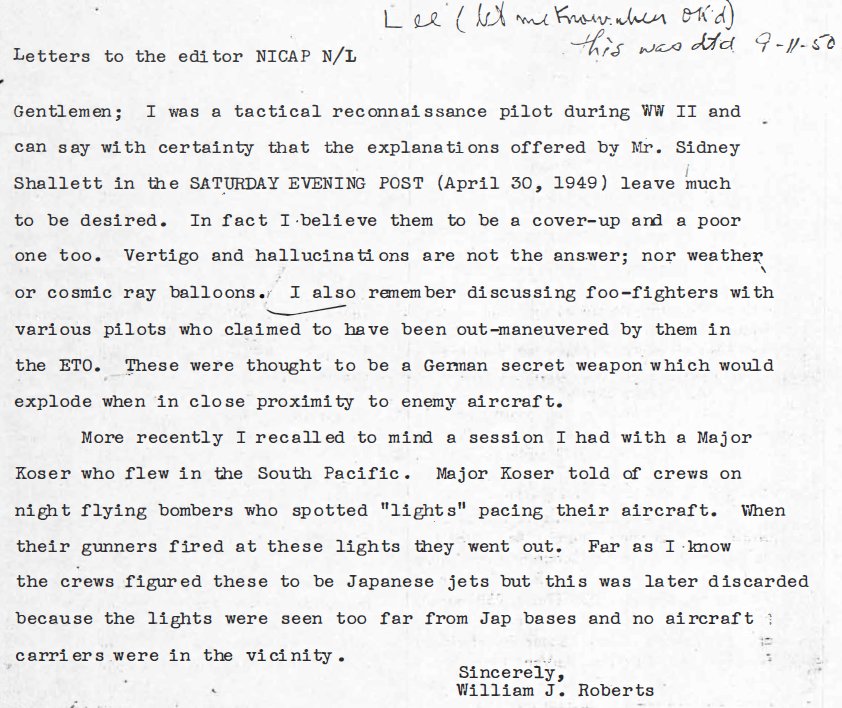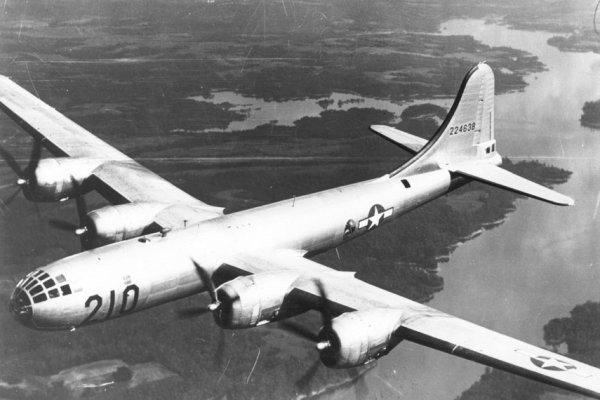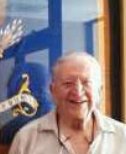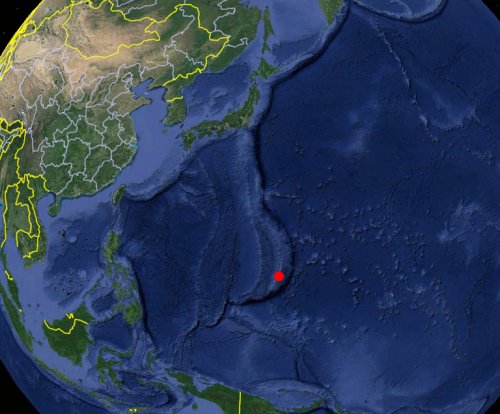ACUFO-1944-00-00-SOUTHPACIFIC-1
In the U.S. newspaper Saturday Evening Post for April 30 and May 7, 1949, their reporter Sidney Shalett published an article headlined “What You Can Believe About Flying Saucers”. The content was quite mixed between sensible debunking, bad debunking, and admission that some cases, mainly reported by U.S. Air Force personnel ”couldn't be dismissed.”
Officers at the Air Force public relation of their UFO project “Blue Book”, then headed by Capt. Edward Ruppelt, had given Shalett “exactly what to say in his article - play down the UFO's - don't write anything that even hints that there might be something foreign in our skies” - as Ruppelt himself wrote in his book.
A number of UFO witnesses who had read the article were bitter at its content. So was William J. Roberts, a former Tactical Reconnaissance Pilot in WWI. He thus wrote to the private ufology group National Investigation Committee on Aerial Phenomena (NICAP) in protest of the debunking by Shalett. He wrote:
I was a tactical reconnaissance pilot during WW II and can say with certainty that the explanations offered by Mr. Sidney Shallett in the SATURDAY EVENING POST (April 30, 1949) leave much to be desired. In fact I believe them to be a cover-up and a poor one too. Vertigo and hallucinations are not the answer; nor weather or cosmic ray balloons. I also remember discussing foo-fighters with various pilots who claimed to have been out-maneuvered by them in the ETO [European Theater of Operations]. These were thought to be a German secret weapon which would explode when in close proximity to enemy aircraft.
More recently I recalled to mind a session I had with a Major Koser who flew in the South Pacific. Major Koser told of crews on night flying bombers who spotted “lights” pacing their aircraft. When their gunners fired at these lights they went out. Far as I know the crews figured these to be Japanese jets but this was later discarded because the lights were seen too far from Jap bases and no aircraft carriers were in the vicinity.
| Date: | 1944 or 1945 |
|---|---|
| Time: | Night. |
| Duration: | ? |
| First known report date: | September 11, 1950. |
| Reporting delay: | 6 years. |
| Country: | |
|---|---|
| State/Department: | |
| City or place: | The South Pacific. |
| Number of alleged witnesses: | Several. |
|---|---|
| Number of known witnesses: | ? |
| Number of named witnesses: | 0 |
| Reporting channel: | By hearsay from other Air Force veteran. |
|---|---|
| Visibility conditions: | Night. |
| UFO observed: | Yes. |
| UFO arrival observed: | ? |
| UFO departure observed: | Yes. |
| UFO action: | Follow planes. Go out when fired at. |
| Witnesses action: | Fire at UFOs. |
| Photographs: | No. |
| Sketch(s) by witness(es): | No. |
| Sketch(es) approved by witness(es): | No. |
| Witness(es) feelings: | Puzzled. |
| Witnesses interpretation: | Discarded that it was Japanese jets. |
| Sensors: |
[X] Visual: Several.
[ ] Airborne radar: [ ] Directional ground radar: [ ] Height finder ground radar: [ ] Photo: [ ] Film/video: [ ] EM Effects: [ ] Failures: [ ] Damages: |
|---|---|
| Hynek: | NL |
| Armed / unarmed: | Armed, 12 Browning M2 12,7 mm machine guns. |
| Reliability 1-3: | 1 |
| Strangeness 1-3: | 3 |
| ACUFO: | Unidentified. |
[Ref. nip1:] NICAP ARCHIVE:

|
Letters to the editor NICAP N/L
Gentlemen; I was a tactical reconnaissance pilot during WW II and can say with certainty that the explanations offered by Mr. Sidney Shallett in the SATURDAY EVENING POST (April 30, 1949) leave much to be desired. In fact I believe them to be a cover-up and a poor one too. Vertigo and hallucinations are not the answer; nor weather or cosmic ray balloons. I also remember discussing foo-fighters with various pilots who claimed to have been out-maneuvered by them in the ETO [European Theater of Operations]. These were thought to be a German secret weapon which would explode when in close proximity to enemy aircraft.
More recently I recalled to mind a session I had with a Major Koser who flew in the South Pacific. Major Koser told of crews on night flying bombers who spotted “lights” pacing their aircraft. When their gunners fired at these lights they went out. Far as I know the crews figured these to be Japanese jets but this was later discarded because the lights were seen too far from Jap bases and no aircraft carriers were in the vicinity.
Sincerely,
William J. Roberts
The Boeing B-29 “Superfortress” was the heaviest bomber of the U.S. Army Air Forces, used in operations from May 8, 1944 and on. Its maximum speed was 574 km/h.
Its defensive armament was 12 Browning M2 12.7 mm machine guns.

|
William J. Roberts
There were several “William J. Roberts” in the U.S. Army Air Forces and in the U.S. Navy aviation.
He may be SMSgt. William J. Roberts, of Fort Walton Beach, Florida, who served 22 years in the Air Forces.
Major Koser
Major Jack D. Koser (2013 photo below) of the U.S. Army Air Forces was the Aircraft Commander of crew #3907 of the 39th Squadron of the 6th Bomb Group based on Tinian in 1944.

|
The crew generally flew on the #42 “Speagle Eagle” B-29. In 1945, Major Koser was also the Aircraft Commander of the “Here's Lucky” B-29.
Jack Donald Koser was born on November 8, 1919 in St. Joseph, Missouri, he passed away on August 18, 2021 in Bradenton, Florida.
Jack D. Koser served for 21 years in the Air Force, from February 8, 1941, to June 30, 1961. He retired at the rank of Colonel and was eligible to wear two Distinguished Flying Crosses, four Air Medals, the American Campaign Medal, the Air Force Commendation Medal, the American Defense Service Medal, the Asiatic Pacific Campaign Medal, the World War II Victory Medal, the National Defense Service Medal, and the Air Force Longevity Service Award with four Oak Leaf Clusters, among others, on his uniform.
The report.
Of course this is more a testimony on the “balls of fire” situation than a case file per se.
The events probably occurred on Tinian, where Major Koser was mostly based in 1944 - 1945.
Tinian, in the Mariannas islands, is about 2150 km south of Japan.

|
There were no operational Japanese jet planes in WWII, only one prototype that made one failed test flight in Japan.
Of course there was the piloted suicide rocket-propelled bomb “Baka”, also known as “Viper”; but it was never used in the south Pacific. As Koser told, this was much too far from Japan.
Unidentified.
* = Source is available to me.
? = Source I am told about but could not get so far. Help needed.
| Main author: | Patrick Gross |
|---|---|
| Contributors: | None |
| Reviewers: | None |
| Editor: | Patrick Gross |
| Version: | Create/changed by: | Date: | Description: |
|---|---|---|---|
| 0.1 | Patrick Gross | June 12, 1944 | Creation, [nip1]. |
| 1.0 | Patrick Gross | June 12, 1944 | First published. |